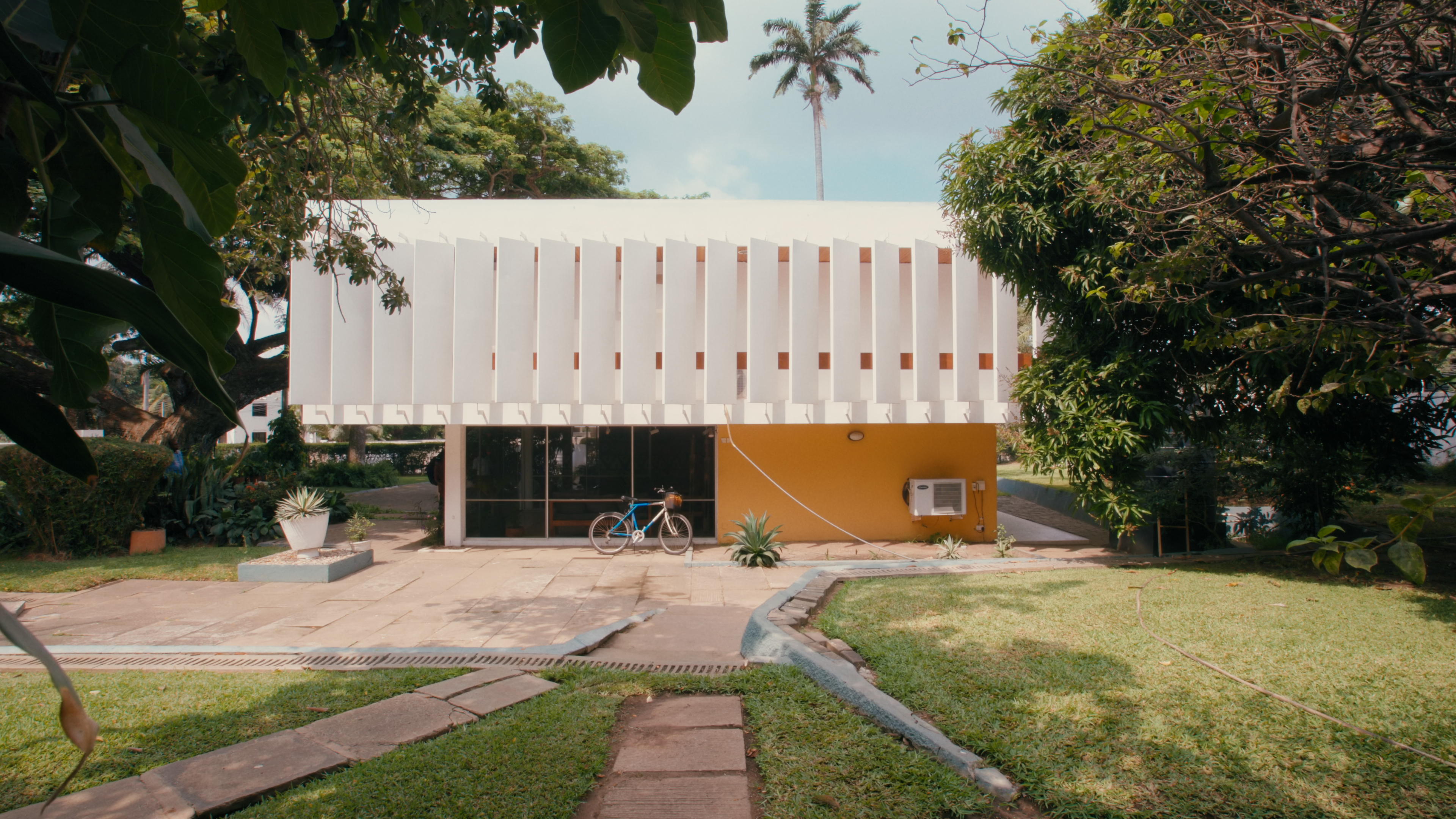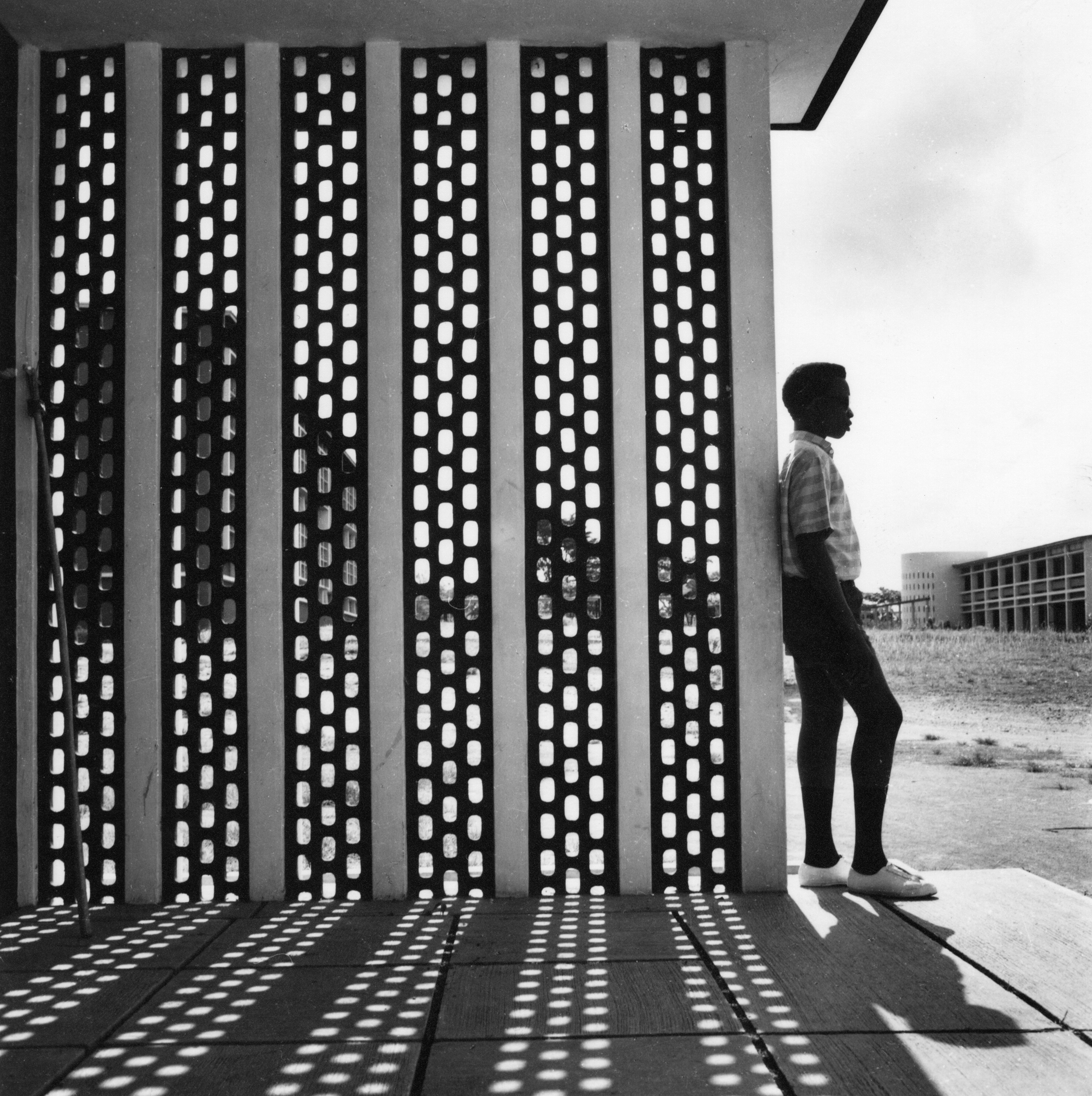
The V&A’s ‘Tropical Modernism: Architecture and Independence’ is a bold exhibition that takes on ideas of colonialism, post-colonialism and how architecture and aesthetics can operate as both propaganda and a tool for liberation. In this complex show we discover the Indian and Ghanaian architects who took this Western aesthetic and modernist architecture, and made it their own, adapting it to their cultures and climates.

‘Tropical Modernism: Architecture and Independence’ at the V&A
The exhibition starts by looking at the legacy of British architects Jane Drew and Maxwell Fry, and their work in both India and Ghana at a time when India had achieved independence and Ghana was just about to.
As these architects were coming up with iterations of the tropical modernism genre, a style of architecture which adapted to the different climates of each country, the cogs of change where turning and their work evolved through the energy and passion of those rebuilding countries and continents after independence. Gold Coast prime minister and Ghana’s first post-independence president Kwame Nkrumah, and Indian prime minister Jawaharlal Nehru were taking their countries into new eras after the end of British rule, through the late 1950s and the 1960s.

'They wanted to have a kind of architecture that looked back to the past, not in terms of copying, or pastiche,' explains Dr Christopher Turner, the V&A’s Keeper of Art, Architecture, Photography & Design, and curator of the exhibition, 'but in terms of using those methods of climate control that have been learned over thousands of years and incorporating them into this modernist vision. So it was like some fusion that they were advocating for. It's modernism with this kind of spirit of the place that was lacking in previous projects, they thought.'

The initial focus is mainly on the Le Corbusier-designed city of Chandigarh, the capital of the states of Punjab and Haryana, and takes a deeper look at the Indian architects, designers and builders, who created the city with the French-Swiss architect.
Built quickly and from scratch, with cheap local labour, the city didn’t take on board Indian street culture or customs of living. While it was a huge achievement, its most visited attraction today is a village of statues by artist and local road inspector Nek Chand made using detritus knocked down to make way for the new Chandigarh, explained Turner.

'Nehru had very strong ideas about how everything should work and he stipulated that the Western architects should not bring their own architecture offices with them, but use Indian architects – and the project would serve as a kind of school,' Turner told Wallpaper* on a tour of the exhibition.
On view are a beautiful defendant’s box from the courthouse, and chairs designed for the library, as well as architectural models and photography bringing to life the stories of the people who worked with the Western practitioners to make the idea of Chandigarh a reality.

'We have an armchair by Pierre Jeanneret, who did design a lot of the furniture for Chandigarh. But a lot of the Indian architects were also involved in the furniture design and didn't necessarily get the credit for it,' explained project curator Justine Sambrook.
The exhibition also tells the story of Ghanaian architect Victor Adegbite, who was asked by Nkrumah to return from the United States to lead the design of a post-colonial Ghana. He designed sites including Accra’s iconic Black Star Square.

We also see the Kwame Nkrumah University of Science and Technology in Kumasi, which was built in 1952 to train a new generation of African architects, and the modernist buildings on campus have the functionality, brise soleils, and use of light and shade that are the trademarks of African Modernism. The senior staff club house, designed by Miro Marasović, Nikso Ciko and John Owuso, features in the exhibition, as well as a film directed by Turner and architects Nana Biamah-Ofosu and Bushra Mohamed, which was also screened at the 2023 Venice Architecture Biennale.
Featuring objects, ephemera, painting, sculpture and film alongside architectural drawings, models and plans, the exhibition charts not only the evolution of modernist architecture outside the West. It also looks at how buildings and aesthetics can represent culture and mirror societal change. It shows how a generation of architects built and expanded on visions of a post-colonial future.

In highlighting the work of the architects and designers who worked with the big Western names that kickstarted the tradition of tropical modernism, the exhibition also shows us where the former took these ideas going forward, both in theory and in practice. The exhibition also nods to the development and ideologies that threaten these buildings today, the legacies of their makers, and what we can learn from this climate-conscious architecture.
'We deliberately set out to complicate the history of tropical modernism by looking at the architecture [in the context of] the anti-colonial struggle of the time, and by engaging with and centring South Asian and West African perspectives,' Turner said. 'As we look to a new future in an era of climate change, might tropical modernism, which used the latest building and environmental science then available to passively cool buildings, serve as a useful guide?'
'Tropical Modernism: Architecture and Independence' is on show at the Victoria & Albert museum from 2 March to 22 September 2024 www.vam.ac.uk







